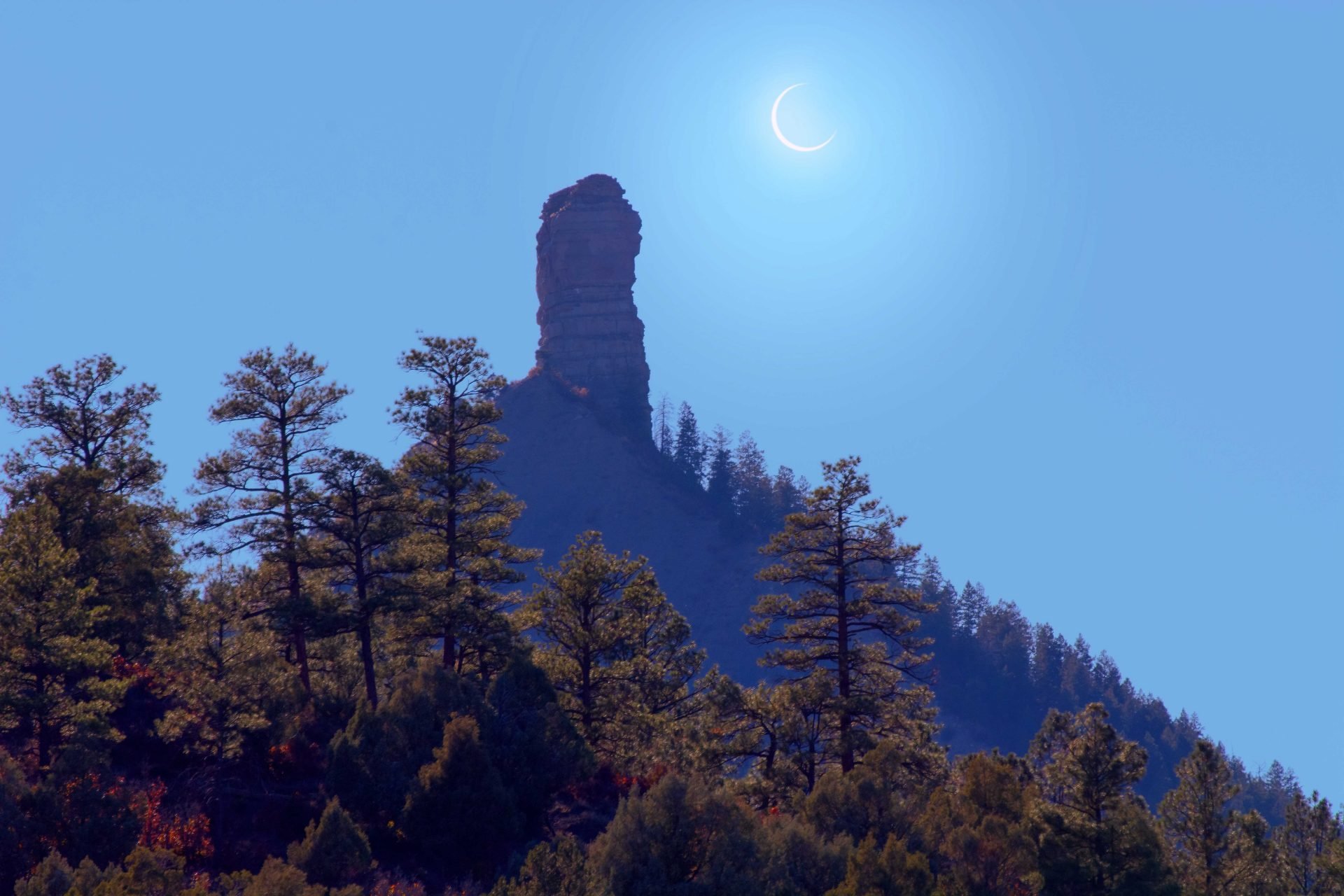By Zaylah Pearson-Good.
On October 14, 2023, millions gathered from across North, Central, and South America to view an annular solar eclipse, also known as a “ring of fire” eclipse. A glowing, ring-shaped sliver of the sun beamed down on earthlings as the moon temporarily passed between the sun and Earth.
Unlike a total solar eclipse, the moon does not completely cover the sun during an annular solar eclipse. This is because the moon is at its furthest point in its orbit from the Earth.
While a ring of fire eclipse is not all that rare in occurrence, happening every one to two years across the planet, it is special to be located along its slim path of visibility. Viewed first in the morning hours by residents of Oregon, the 2023 eclipse continued to travel through the Four Corners region of the Southwest, Texas, and parts of Mexico, Central and South America, and ended in the Atlantic Ocean near sunset. Those near but not within the path of the eclipse may have seen a partial eclipse.
Though many people flocked to view this unique sight, eclipse glasses in hand, some Americans believe that solar eclipses should not be viewed.
This year’s annular solar eclipse passed right through the Four Corners region, Indigenous lands that are largely occupied by the Navajo (Diné) Nation. To the Navajo, a solar eclipse signifies both the dying and rebirth of the sun. It is a sacred time for rebalancing, cleansing, and reverence. As the moon, sun, and Earth align, the Navajo see the eclipse as a time for renewal of life. To honor this sacred time, many Navajo people gathered inside their homes, as they have done for generations, to sit in stillness, silence, and reverence as the eclipse passed over.
On April 8, 2024, a total solar eclipse will pass through the U.S., from Texas to Maine. With the moon completely blocking the sun from Earth’s view during the total eclipse, the sky will dim.
Some people are calling this upcoming event The Great North American Eclipse.
To learn more about the 2024 eclipse, visit www.science.nasa.gov/eclipses/future-eclipses/eclipse-2024.
Photo: Chimney Rock National Monument with solar eclipse. You can’t point a professional camera with telephoto lens at the sun or it will fry your sensor. The only way to capture an image like this is combining one exposure of the eclipse using a full solar filter, with a regular exposure of the landscape. photos by Patrick Myers, NPS


